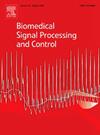OSLTBDNet: Orthogonal softmax layer-based tuberculosis detection network with small dataset
IF 4.9
2区 医学
Q1 ENGINEERING, BIOMEDICAL
引用次数: 0
Abstract
Tuberculosis, often known as TB, is a chronic bacterial infection, which damages the lungs. TB is one of the top 10 main causes of mortality in the world. It is essential to make an accurate and prompt diagnosis of tuberculosis (TB). In this work, a novel Orthogonal Softmax Layer-based Tuberculosis Detection Convolutional Neural Network (OSLTBDNet) is developed by leveraging the merits of depthwise separable convolution, tunable hyperparameters, inverted residual bottleneck block, and orthogonal softmax layer (OSL)-based classification. OSL maintains the orthogonality among weight vectors to boost class discrimination capability; thus improving classification results. It reduces coadaptation between parameters by discarding several connections from the fully connected convolution layer, FCCL, hence simplify the optimization. Thus, leveraging these above-discussed salient features makes the proposed system more accurate and faster as well. The results of this experiment suggest that the proposed model is superior to other comparing models with the best 99.00%, and 98.17% accuracy in Kaggle and TBX11K datasets, respectively.
求助全文
约1分钟内获得全文
求助全文
来源期刊

Biomedical Signal Processing and Control
工程技术-工程:生物医学
CiteScore
9.80
自引率
13.70%
发文量
822
审稿时长
4 months
期刊介绍:
Biomedical Signal Processing and Control aims to provide a cross-disciplinary international forum for the interchange of information on research in the measurement and analysis of signals and images in clinical medicine and the biological sciences. Emphasis is placed on contributions dealing with the practical, applications-led research on the use of methods and devices in clinical diagnosis, patient monitoring and management.
Biomedical Signal Processing and Control reflects the main areas in which these methods are being used and developed at the interface of both engineering and clinical science. The scope of the journal is defined to include relevant review papers, technical notes, short communications and letters. Tutorial papers and special issues will also be published.
 求助内容:
求助内容: 应助结果提醒方式:
应助结果提醒方式:


